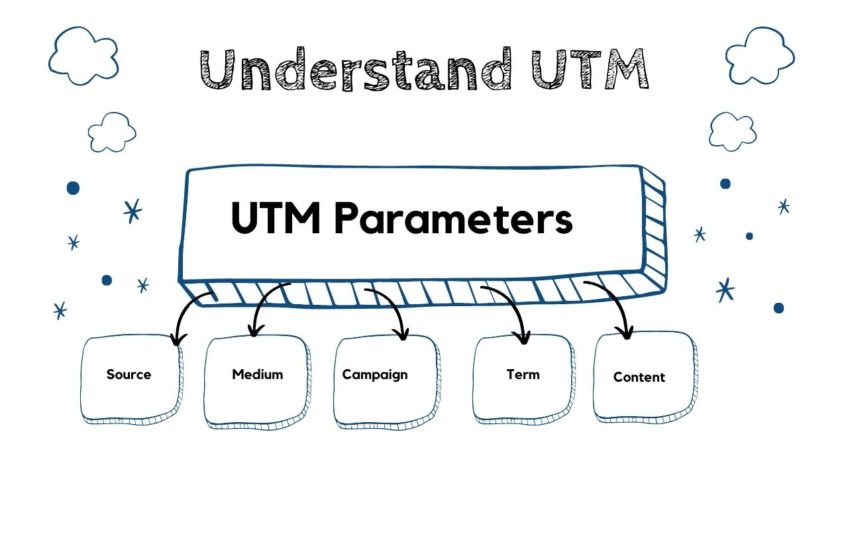Suppose you are running a digital marketing campaign for a high-profile client. You have defined the objectives, started advertising and boosted the promotional content and material. Now, the traffic you receive from different social media channels and other web sources varies greatly. You see the traffic but don’t know where it is coming from or what the source of traffic is. This is where UTM codes or parameters can help.
If you have done a digital marketing course or from any other place, UTM codes are the most basic thing you must have heard about while learning Google Analytics. But there is more to it and this blog aims to provide you with all the necessary information about UTM.
What is UTM?
UTM or Urchin Tracking Module are codes which can be used to track the campaigns you run and your related marketing efforts on the web. These UTC codes are attached to the URL which will help you generate analytics data of your campaigns. In this way, you can measure all that you are doing online and understand its growth and performance.
As mentioned before, UTM codes of different analytic tools help you understand the flow of traffic to your website. Moreover, it gives deeper insights into conversion. This eventually helps in optimizing your campaigns according to the data received and makes the campaign dynamic in nature.
Let’s take the example used before. Suppose a website visitor lands on your website through different sources like the landing page, Facebook page or SEO blog. It is very complex without proper tracking capacity to understand the efficiency of your campaign through different channels. And without UTM codes, you won’t find the distribution of your traffic.
UTM Parameters
There are different UTM parameters which can be tracked and these are related to the traffic source. The top 5 are Source, Medium, Campaign, Keyword and Content.
Source
It is worth noting that every click on the website has an origin or source. In digital marketing, there are different possible sources such as search engine Google, social media platforms like Facebook, email, or a direct visit using the URL or link.
Code used: utm_source
You need to add this piece of code for UTM to be functional. This value will help you identify the traffic source. Note that utm-source is a code which connects to the value of utm_medium which will discuss in the next point. Without utm_medium, web analytic tool won’t recognize utm_source and end up showing – ‘Direct’ as the source.
Medium
As the name suggests, every click that goes to your website has a medium. The different mediums can be organic which means it involved no money. It also includes paid search which costs money, email, or direct traffic which shows none.
Code used: utm_medium
Multiple channels can give the medium value and therefore it is considered very broad. It is interesting to note the connection between source and medium. Because Google as a source can provide traffic from different mediums such as organic, Display network, Paid advertisement etc.
Campaign
You can use the campaign parameter to identify a campaign created by you or connected to your website link. You can use product name, sale type, service offering etc.
Code used: utm_campaign
Keyword/Term
Use this UTM parameter to track and measure paid search campaigns and their related keywords used. This helps to identify keywords that led to the website visit. This is great for PPC marketing and help in further optimization.
Code used: utm_term
Content
This parameter is helpful in campaigns which generally have multiple ads. You can easily differentiate code based on content like a blog or a video in the ad. Similarly, if you have two CTA’s in the ad or email content, you can easily measure which one is working efficiently.
Benefits of Using UTM Parameters
Channel
It is important to analyze the digital marketing campaigns consistently to measure its performance and how much value it is adding to the business. UTM parameters allow you to know the specific channels bringing traffic to your website. This further clarifies which channels are working for your business and helping to gain leads and conversions.
Performance Analysis
When you are using different digital marketing platforms, the analysis must be done to gauge the effectiveness of all of them. This large amount of data and insights through UTM parameters allow you to do the analysis thoroughly as well as consistently.
Customer’s journey
Another highlight of using UTM parameters is that businesses can understand which channels are preferred by the customer. Moreover, you can study the customer’s journey from the awareness stage to the decision stage easily. This will help you in creating campaigns keeping the customer preference in mind.
Understanding specific campaigns & strategies
Tracking and measuring are useful because there is an opportunity to know what works and what doesn’t at any given time. Accordingly, you can formulate your future strategies to help the business grow.
A/B testing
A/B testing is an integral part of every digital marketing campaign. Content can be tested and communication of the message to your target audience can be measured and analysed.
Now that you now about UTM parameters do not forget to implement them in your digital marketing campaigns. Traffic attribution data and its analysis can help you increase ROI and control budget spending on campaigns as well.
To learn more about UTM parameters, join Online Digital Marketing course with Certification. The highly experienced mentors with in-depth knowledge of using UTM codes and analytics will help you learn all aspects of it.



































